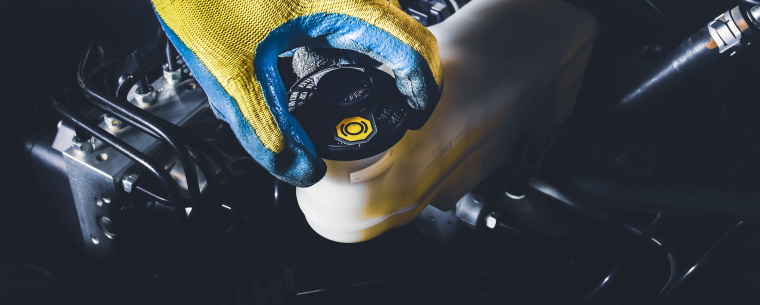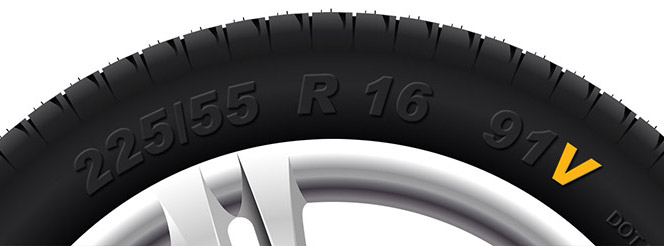What the Car Fluid Symbols Mean Under the Hood
Published on: Monday, 15 November 2021 | Author: Jack Dreyer
For new drivers, the under-bonnet area can seem like an impossible maze to navigate. From engine oil to power steering fluid, there are a lot of things that need to be monitored under the hood. Each of these requires a different balance and type of fluid which, unless you’re an expert, can be difficult to get to grips with.
Working from left to right as you stand facing the car head-on, there is power steering fluid, windscreen wash, engine coolant and oil, brake fluid, and clutch fluid. With this many things, you’d be forgiven for not knowing exactly what’s what under there.
So, read on to find out exactly what those car fluid symbols mean and how to keep on top of your under-bonnet maintenance.
First things first
Park your car on a flat surface; if you are trying to take readings on a slanted verge, naturally the fluid levels will be out. It is also important to let your car sit for a while before opening up the bonnet and beginning to touch the engine. If you’ve driven recently, the components under the hood will be hot which is not only dangerous but a recipe for inaccurate readings.
If this is your first time checking your levels, you can always use the owner’s manual to familiarise yourself with the location of the reservoirs using a diagram (if there is one).
1. Power steering fluid

The power steering fluid icon is, appropriately, a circle that resembles a steering wheel. It will also often be a bright yellow colour for ease of identification in poor visibility conditions – though this does vary.
On the rare occasion the icon has worn away, the power steering reservoir is also often transparent so you can monitor the quality and level of fluid without the need for lid removal.
If you’re planning to top-up your power steering fluid, it is essential you get the right reservoir – since confusing it with brake fluid can be a costly mistake to make.
When checking your power fluid levels, you may also notice the words ‘Cold’ and ‘Hot’ on the reservoir. This is because power steering expands when heated by the engine so there are two maximum levels for it to rise to; ‘Cold’ when the car has been at a standstill for a while and ‘Hot’ when the car has just stopped after driving.
2. Windscreen wash

The windscreen wash reservoir is sometimes quite hard to find since often only the cap is displayed on the inside of the front wing of the car.
The cap itself should be blue and will usually show the standard symbol depicting water droplets and a screen. Not to be confused with the engine coolant reservoir, which displays a danger sign, the windscreen wash’s cap simply pulls off rather than being screwed on and off.
In case of an emergency, you can just use water to refill the screenwash; however, it is advised you always use screen wash to fill up this reservoir. Why? Not only is specialist screen wash resistant to freezing in the winter months (meaning you can clear your windscreen year-round) but it reduces wear and tear on your wiper blades too.
As for checking the levels, if the bottle isn’t all the way filled up, add some more in for good measure – it can actually be an MOT test failure if you don’t have sufficient screen wash!
3. Engine coolant

Another blue-capped reservoir is the engine coolant bottle. Although nowadays, the actual coolant is poured into a container outside of the radiator, the plastic expansion is usually located on one side of the engine. As mentioned, the engine coolant bottle is easy to identify since it has a warning sign on the cap — and this is because the coolant is extremely important.
Not only does it prevent the corrosion of internal engine components, but it helps the engine maintain an optimum temperature which allows for better overall performance and, in turn, lower fuel costs.
Without adequate levels of coolant, your engine could easily overheat or seize up. As a result, then, you should check and top-up your coolant before every long journey and at least every month.
4. Engine oil

Often called the ‘life blood’ of the vehicle, engine fluid is the one thing your car simply cannot live without. The reservoir should be relatively easy to find in the centre of the under-bonnet area, though the dipstick used for checking can be hidden.
Look for a brightly-coloured handle located around the front or side of the engine bay and you should be onto a winner.
Using the dipstick to check the oil levels will prove invaluable to you as low levels can cause damage to the internal engine mechanisms which may be expensive. What’s more, engine oil reduces friction by lubricating and cleans and cools the engine too. So, don’t just wait for the dashboard to light up before you check but regularly check it yourself.
5. Brake fluid

The brake fluid reservoir is usually found on the driver’s side at the rear of the engine and is easily identifiable thanks to the transparent plastic bottle. If you’re lucky, many modern vehicles have the words ‘brake fluid’ printed on the lid or at least a commonly-known symbol.
Brake fluid is critical to your vehicle’s safety as it helps apply the force to your brakes needed for them to stop quickly. It’s important that you check not only the levels but the quality of your brake fluid. If the fluid is a dark colour, it needs changing soon; light, syrup-looking fluid, on the other hand, is good.
Clutch fluid
In some vehicles, the brake and the clutch fluid share the same reservoir. Though, it's best to check your owner’s manual for guidance just in case.
If they don’t share the same fluid, then the clutch fluid reservoir will be near the windshield on the driver’s side in a transparent bottle with a black top. Nowadays, most clutch fluid bottles are labelled with a maximum and minimum for ease.

Pulling it all together
In order to make sure your vehicle runs smoothly, you’ll need to keep on top of your under-bonnet area maintenance. It’s essential that you check the levels and quality of the fluids mentioned above on a regular basis so that you never go without them. With things like power steering fluid and brake fluid, your car really cannot function if they run out.
So, pay attention to the warning lights on your dash (trust us, they aren’t just decorative or to be ignored) and keep a funnel and a rag in the boot just in case.




